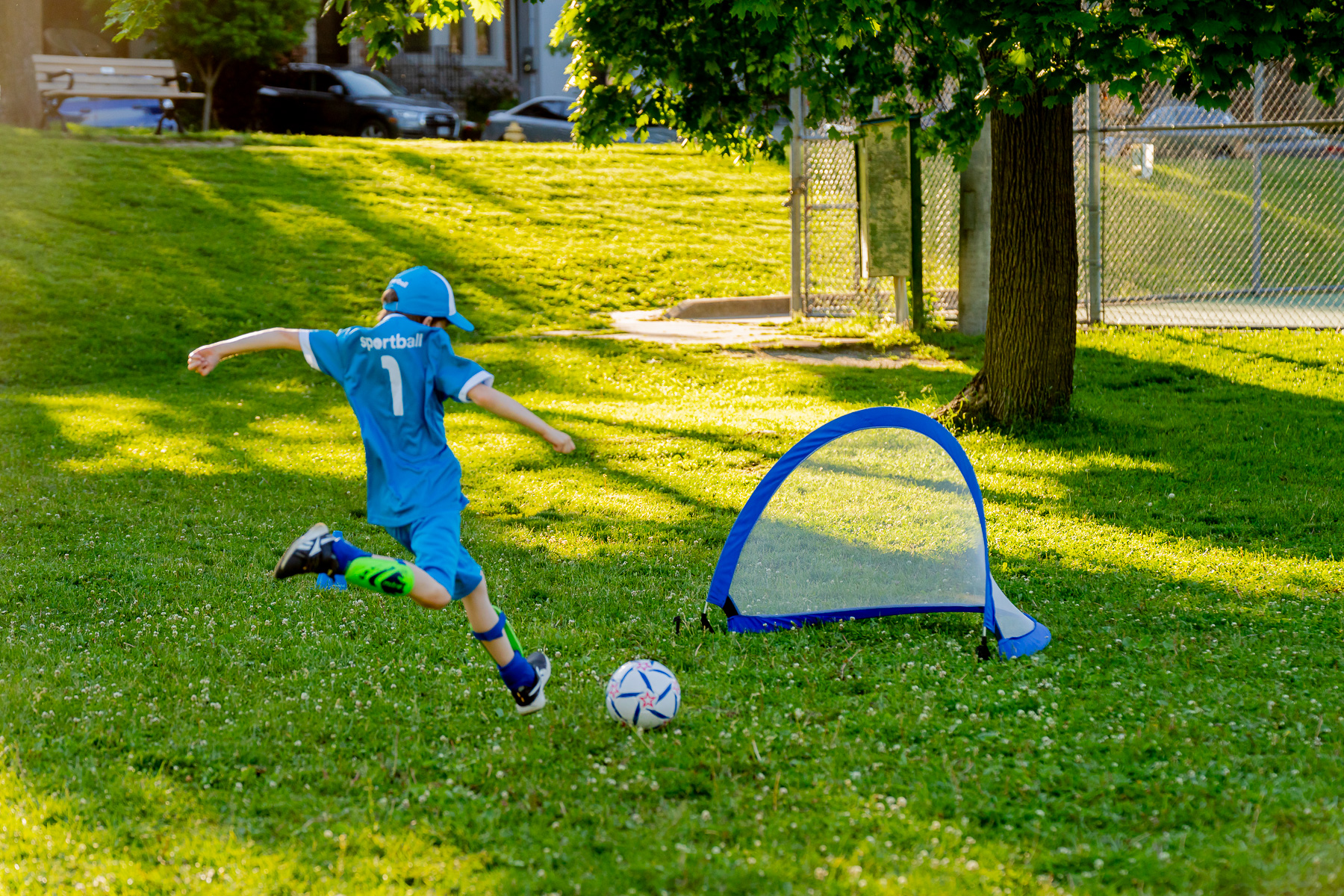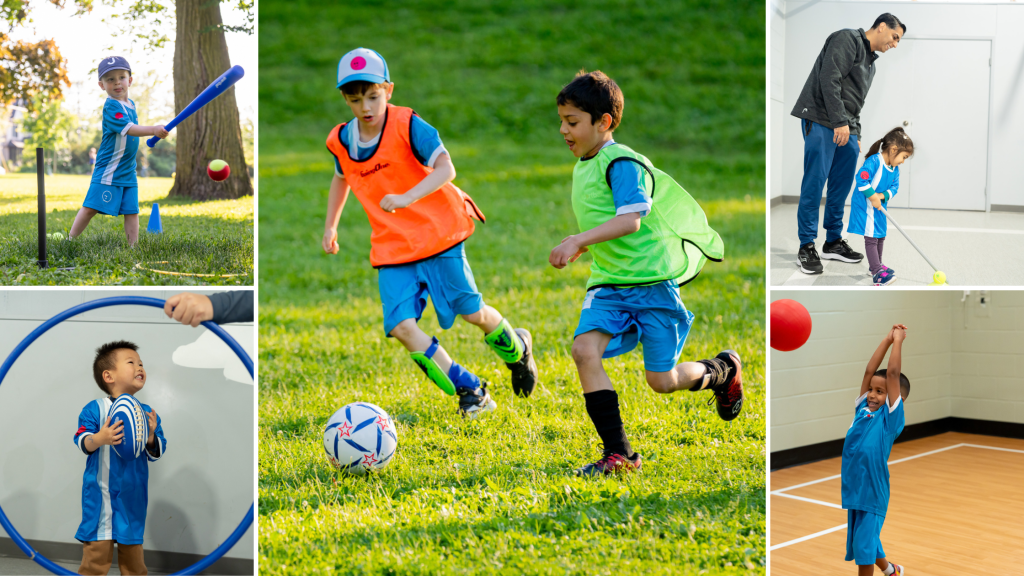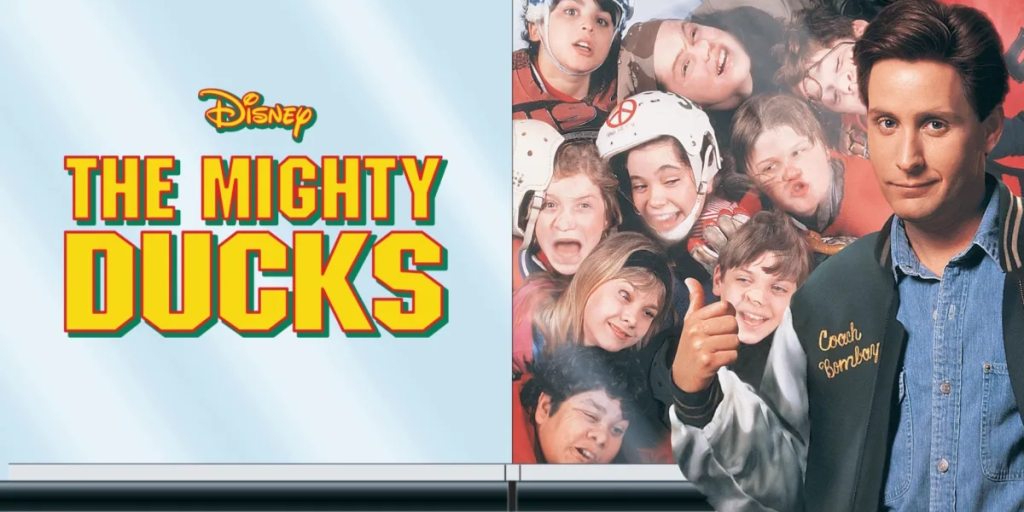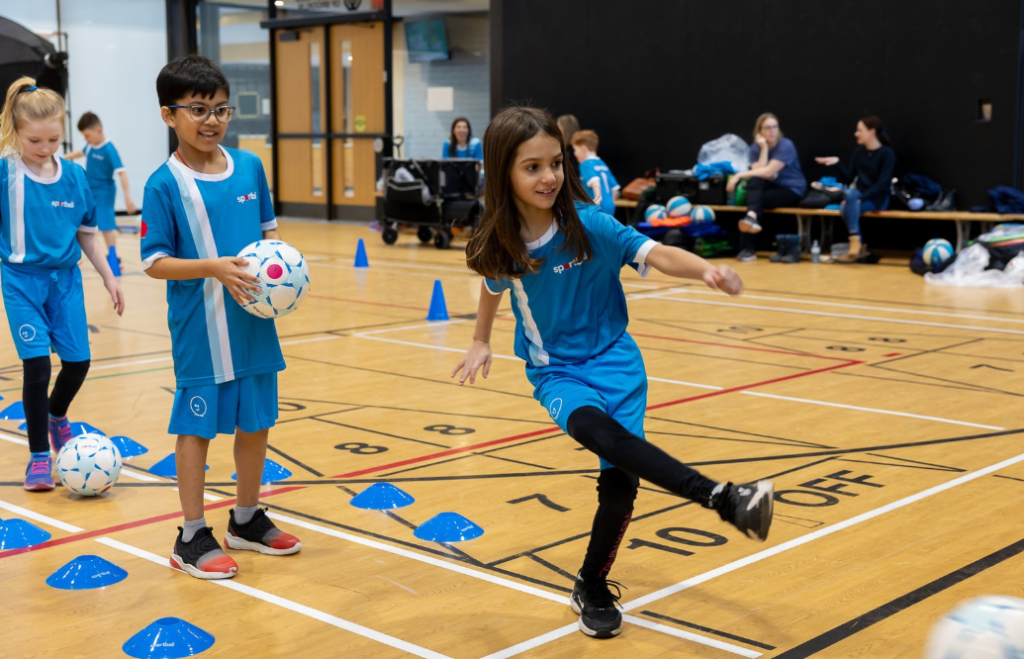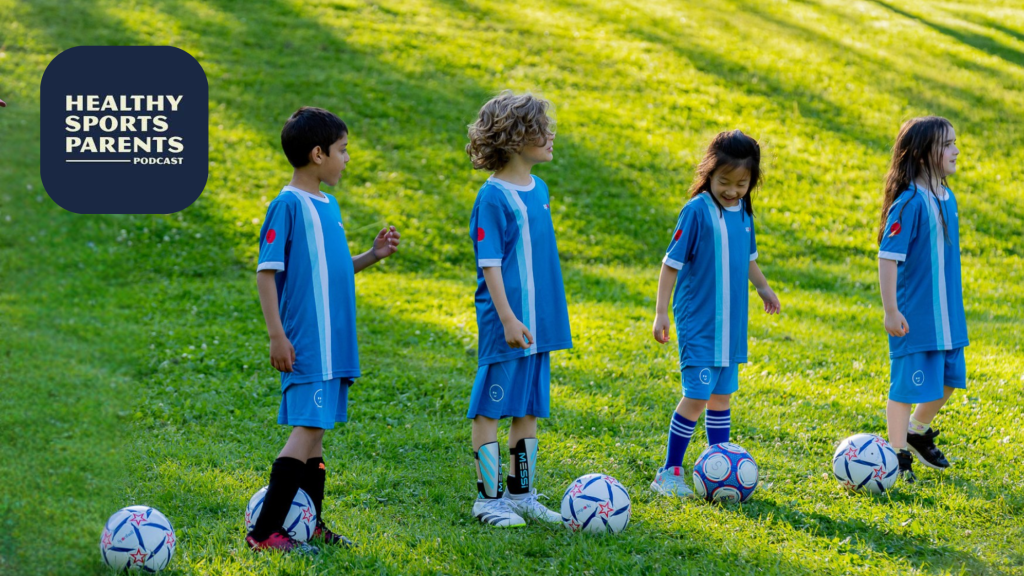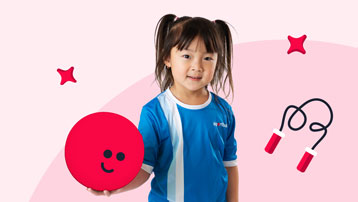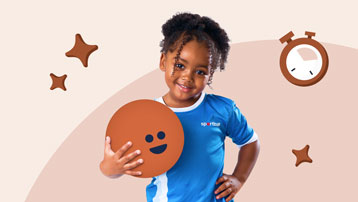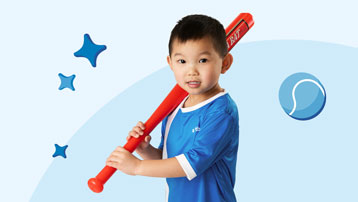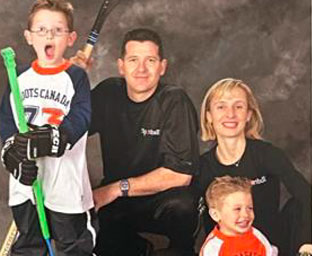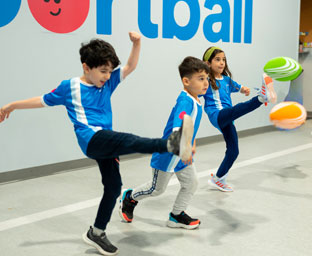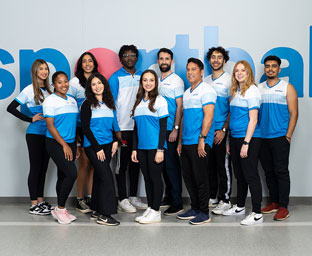Soccer is one of the most popular sports in the world, with an estimated 250 Million people playing some level of soccer around the globe. The sport has grown globally, with stars like Christine Sinclair, Christian Pulisic, and Megan Rapinoe bringing the sport into the limelight in North America, inspiring kids everywhere to pick up a ball.
Most parents enroll their kids in a soccer program at a young age, and with good reason! On top of the sport being extremely fun, accessible, and social for kids, daily outdoor exercise helps to strengthen the immune system, develop muscles and sharpens the brain. Not to mention, the feelings of excitement they get when they learn a new skill, score a goal or complete a nice pass to a teammate.
For parents looking to get their toddler or young child into soccer safely and at the right time, we’ve put together this all-encompassing guide to fill you in on everything you need to know.
When Can Children Start Playing Soccer?
Children can start to learn the basic motor skills involved with soccer as soon as they can walk with confidence. These early stages of play can be done with parents at home, learning basic concepts like kicking a ball around and moving quickly. There are also programs specifically designed to help children as young as 16-months develop these foundational soccer skills in a safe environment, such as Sportball’s soccer programs.
Most competitive soccer programs begin around age 5, when children have more control over their bodies, have a better grasp of the game rules, and can take guidance from a coach. When your child expresses interest in joining a team or seems to be able to control a ball and themselves whilst playing, it’s the perfect time to take the step into soccer a formal soccer program.
Organized leagues start at the Under 8 category (U8), with short seasons throughout the summer. If your child is already showing interest in sport or being active prior to the time which they are eligible, programs such as a local community soccer camp can help them learn the motions of the sport, improve their motor skills, and help them start their league play on the right foot.
Fun Fact: The exact origins of soccer are unknown, but there is evidence of the sport being played over 3,000 years ago in China, Greece, and Rome.
Types of Youth Soccer Programs
There are many different ways to get your child onto a soccer pitch, it all depends on what level they want to play and how involved you want to be. There is no real competitive option before the age of 7 years old, and we recommend getting them into a non-competitive space before considering making the switch. This allows children to build a healthy relationship with the game and physical activity, figure out where they fit into the game and to hone foundational skills in order to progress in the sport.
Recreational Leagues
- Run throughout communities by dedicated volunteers, these leagues offer competitive game play primarily through the spring/summer months. These programs are geared towards children 7 and up.
Development Programs
- Development programs, like ones run at Sportball, offer young kids a safe, non-competitive environment to learn basic soccer skills and deepen their understanding of the sport.
School Programs
- School-based soccer programs generally run through the fall for children interested in playing soccer for their school team.
Soccer Camps
- Intense summer camps held by local soccer teams, usually in partnership with Canada Soccer, are aimed at helping kids develop specific skills in soccer, and to identify players who could make a career out of the sport.
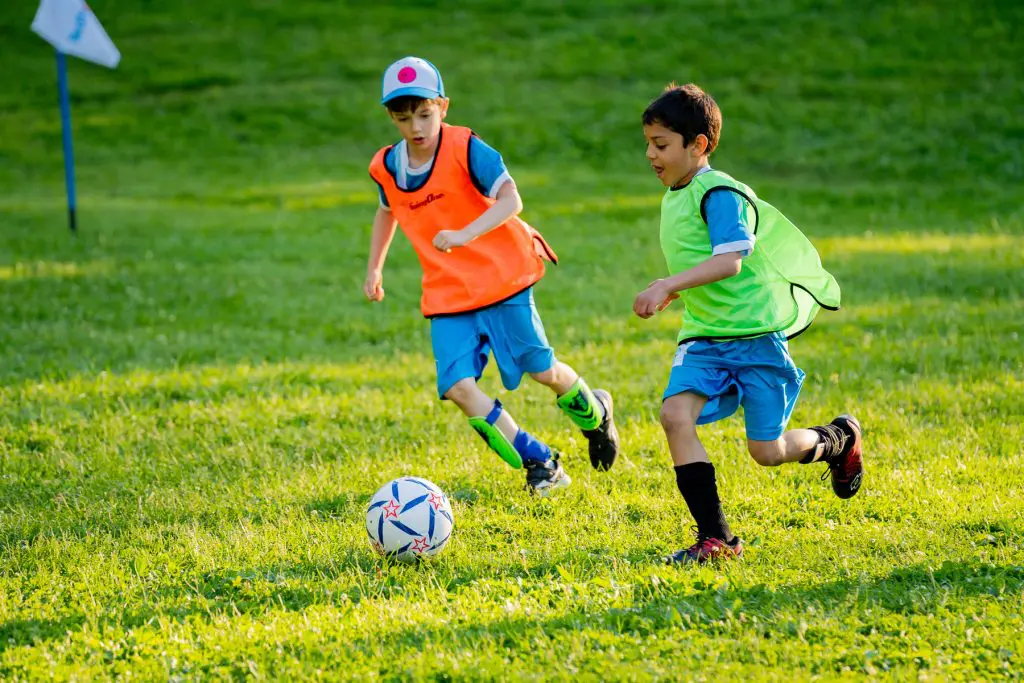
Getting Started in Kids Soccer
Ready to begin? Good for you! There are lots of benefits to starting your child early in any sport, especially soccer. As we continue to lose outdoor spaces for kids, and as experts warn of a “loneliness crisis” amongst youth, soccer gives kids a chance to be outside, to collaborate with other children, and to be active all at once. This has proven to help their self esteem, physical capabilities, and in some cases, their academic performance.
When reviewing local program options to find the best fit for your family, think about where your child is in their development before committing. Starting them in a competitive space before they’re ready will likely hurt their relationship with the sport rather than fuel it. Age, skill level, competitiveness, and your desired level of involvement should all be considered.
If you’re registering for community leagues, keep an eye on your municipality’s website, or check announcements in community centres for upcoming registration days. If you’re looking to get your toddler into a program to learn basic movements, passes, and skills, check out non-competitive programs and sign up for upcoming sessions that are typically structured around the seasons of the year. For school-aged children, most programs run in the summer when school is out, so expect registration to open between January – March.
What To Expect on the Field
Soccer for young children is, understandably, different than that for those who are older. Canada Soccer recommends that U7 – U12 leagues opt for the Festival Format, where multiple games are played in a day, instead of the typical league format. This is because matches are often shorter, and on a smaller field of play. Most youth programs opt for this system, but it can vary between region.
Team size will vary based on registration numbers, but most will opt for a 7 – 10 player roster, playing 5 on the field at a time, with substitutions regularly made to ensure each child gets a reasonable amount of playing time.
Fun Fact: In most professional soccer matches, the average player will have control of the ball for a total of 2 minutes in a 90-minute game.
Practices will vary based on skill level and program, but for younger kids starting out, practices will focus on the basics, learning how to do big kicks, passing to other people, and running between cones. There are programs where young kids can do this on their own, or with their parents at their side to help them get the ball rolling.
The Role of A Parent
The involvement of a parent will vary based on what type of soccer program you choose, but no matter the age of your child, being supportive both on and off the field is the most important role you can play. When your child is done practice or a game and they come running to you, ask them 3 important questions. Did they have fun? Do they feel like they’re improving their skills? Most importantly, are they excited to come and play again next time? If you have any further questions about the program or your child’s role, we suggest you talk to the programs coordinator, such as the municipality or organization running the logistics.
Practices will vary based on age group, most will last an hour with kids warming up their legs, then some practice moving and controlling the ball, learning a new skill such as shooting, passing, or defending, and maybe a little mini match. Practices are key for skill development and learning more about fellow teammates, so don’t miss them, and arrive early!
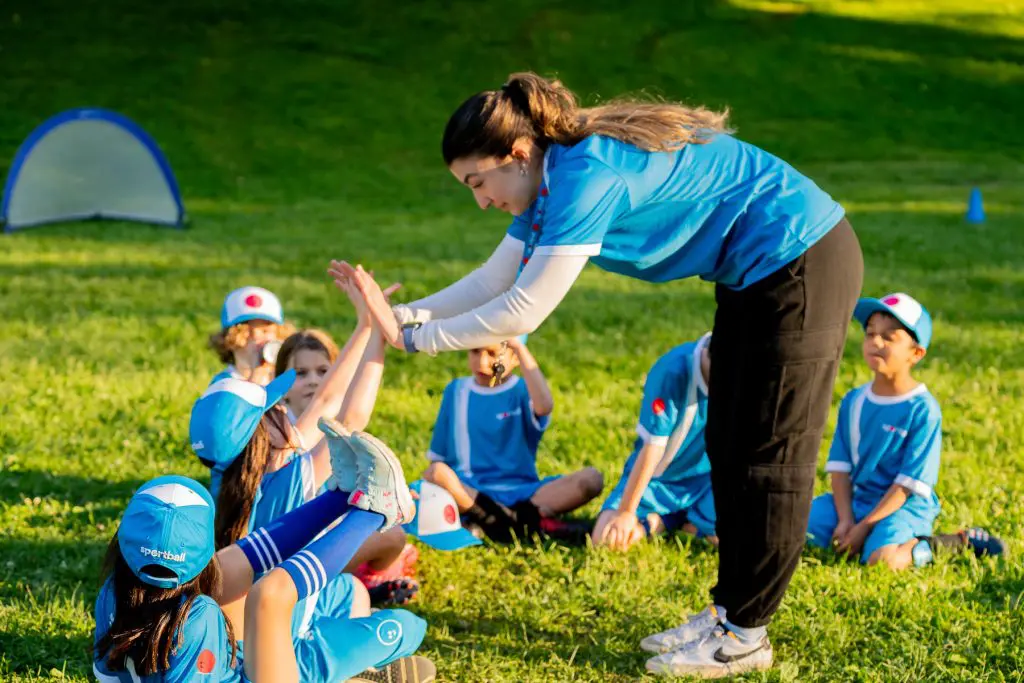
Essential Equipment for Kids Soccer Programs
Soccer is the world’s game because all it requires is a ball and a flat surface. However, if you want to give your child the safest start in the sport, there is some basic required equipment. To play in an organized setting, your child will need:
- Shin pads to protect their legs and ankles
- Soccer socks (worn over the shin pads)
- Cleats designed specifically for soccer to prevent painful falls (plastic, not metal)
- A good water bottle – staying hydrated is important when you’re running a lot!
Note that for children under 6 in development-based programs, this equipment is often nice to have but not required. Most programs will specify required equipment during the registration process.
Prices for equipment will vary, but you can find basic shin guards for as low as $10 at national retailers such as Decathlon. Buying in store will allow you to get the proper fit, as ill-fitting equipment can do more harm than good.
As a parent, you’ll probably want to invest in a comfortable lawn chair and come prepared with all the pre/post-game snacks to help kids stay fuelled and happy.
Ready for Kickoff?
If you’ve made it this far in our ultimate soccer guide for kids, you must really be invested in getting your little athletes onto the pitch and we couldn’t be more excited! Soccer is a hit with kids of all ages and a great way for kids to be both active and social. It also offers parents the chance to be involved with their child in a sport.
If you’re looking to get your child into a program designed to help them learn the fundamentals of soccer and movement, Sportball offers outdoor soccer sessions in the Spring & Summer months in a non-competitive environment. These programs, designed for kids ages 16 months to 12 years, offer chances to develop foundational soccer skills such as kicking, passing, dribbling, teamwork and leadership skills. To learn more about Sportball’s kids soccer programs and register today!
About the Author
Natasha lives in Calgary, Alberta with her husband, 2-year-old daughter, and spunky labradoodle. She works as a pediatric physiotherapist helping children from birth to teenagehood achieve their full physical potential. When asked, Natasha’s sport of choice is swimming, where she competed at the national level for over ten years, and now enjoys training with her Masters swim team. She also loves exploring the mountains through hiking or skiing any opportunity she gets.
